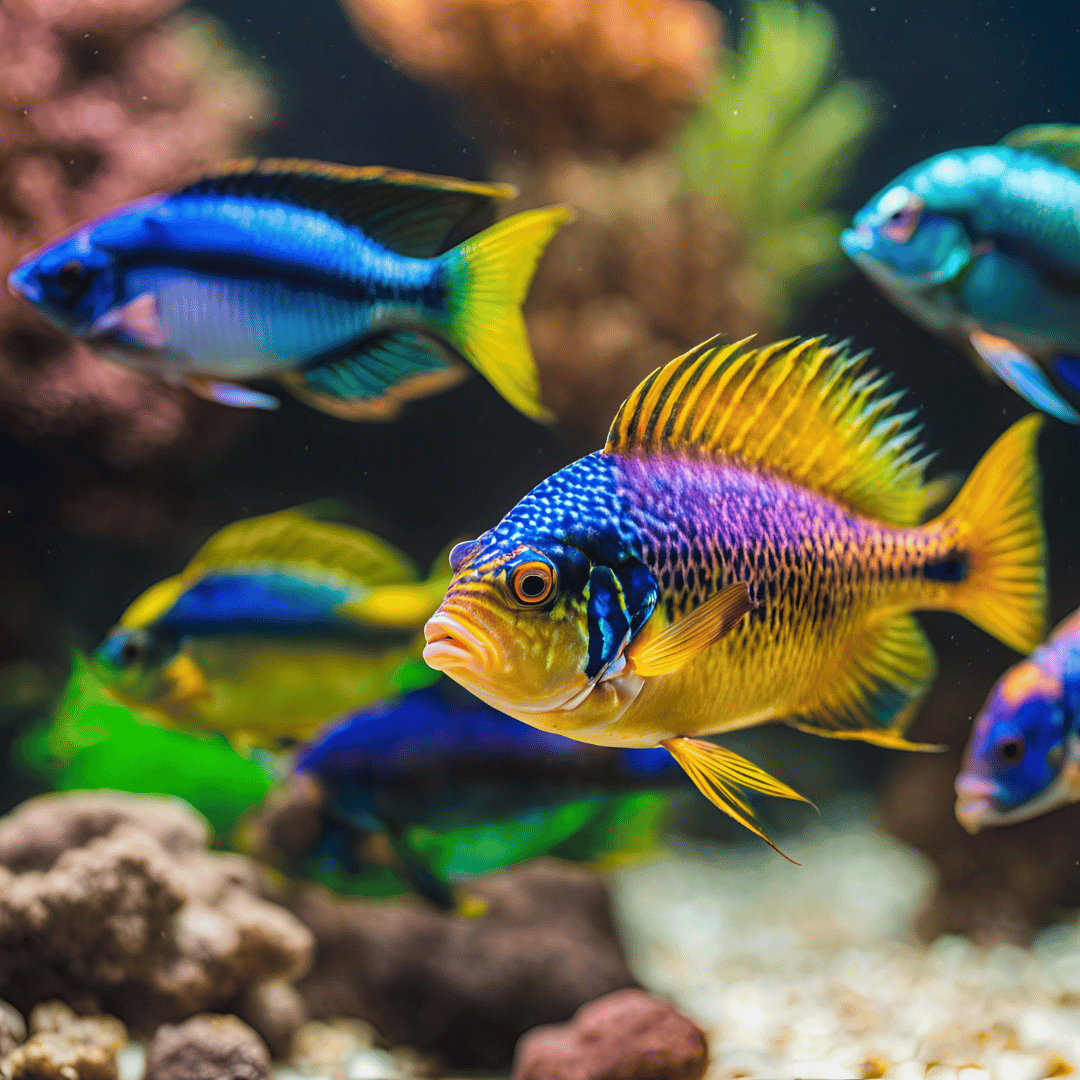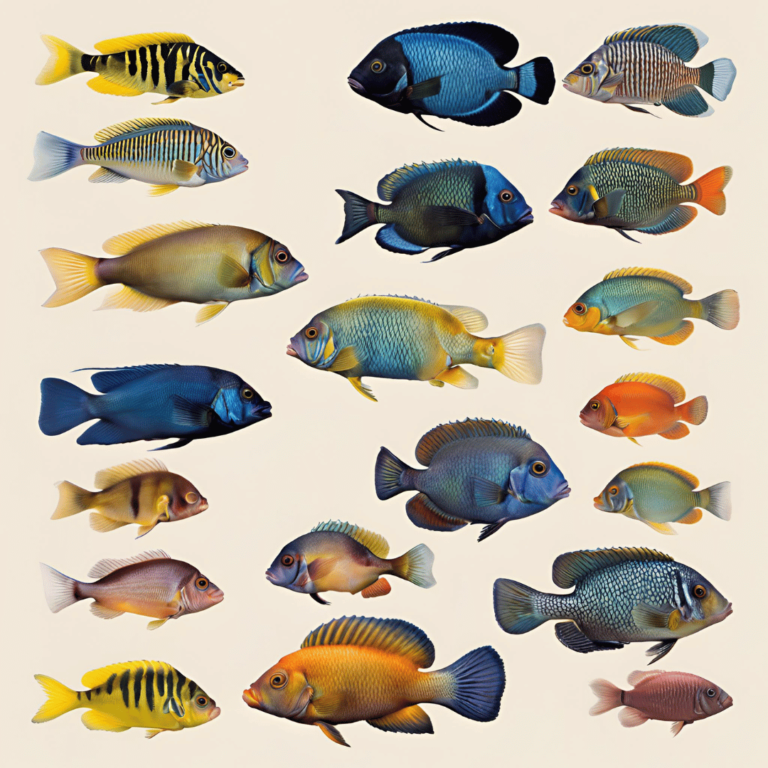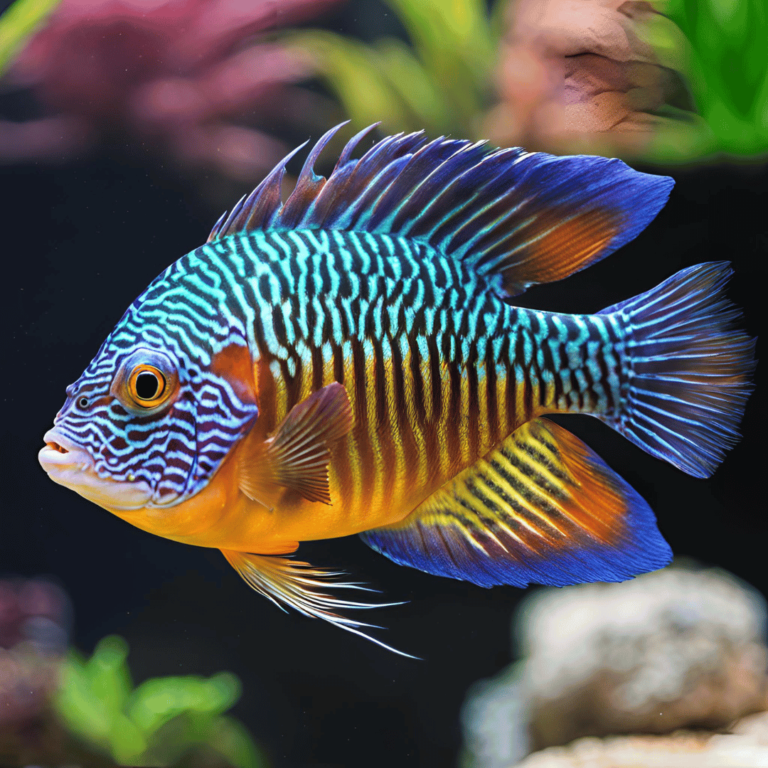Your trusted guide to cichlid care, tank setups, and quality products.

10 Proven Steps to Quarantine Peacock Cichlids Safely
Protect your peacock cichlids from disease with proper quarantine! Our expert guide reveals the best practices for setting up a quarantine tank, acclimating new fish, and preventing the spread of infections.
Image credits Canva
When introducing new peacock cichlids to your aquarium, learning how to quarantine peacock cichlids is a critical step. This process not only protects your existing fish population from diseases but also allows the new fish to adjust to their environment. By following these 10 proven steps to quarantine peacock cichlids safely, you can ensure a healthy and thriving aquarium. Let’s explore each step in detail.
At PeacockCichlid.com, we believe in transparency and honesty with our readers. Some of the links in this article are affiliate links, which means we may earn a small commission if you make a purchase through them—at no additional cost to you. These commissions help support our site, allowing us to continue providing expert advice, in-depth guides, and valuable content for Peacock Cichlid enthusiasts like you.
We only recommend products that we trust and believe will be beneficial for your aquarium. Thank you for your support!
1. Understand Why You Need to Quarantine Peacock Cichlids
Peacock cichlids are stunning and vibrant fish but are susceptible to stress and diseases, especially when transitioning to a new environment. Quarantining peacock cichlids prevents illnesses like Ich, fin rot, or parasitic infections from entering your main tank.
Even if new peacock cichlids appear healthy, they may carry hidden pathogens. Isolating them in a dedicated tank protects your established fish and gives the newcomers time to acclimate safely. Properly quarantine peacock cichlids to minimize risks and set the stage for long-term success.
2. Determine the Ideal Quarantine Period for Peacock Cichlids
The ideal period to quarantine peacock cichlids is 2 to 4 weeks. This timeframe allows you to:
- Observe their behavior and health.
- Treat potential illnesses before introducing them to the main tank.
If your peacock cichlids show no signs of disease during this period, they’re ready for transfer. However, if any issues arise, extend the quarantine and address them immediately. Knowing how long to quarantine peacock cichlids is crucial for their health and the safety of your aquarium.
3. Recognize Signs of Illness When You Quarantine Peacock Cichlids
Monitoring your fish during quarantine is essential. While you quarantine peacock cichlids, look for these common signs of illness:
- White spots: Indicates Ich, a parasitic infection.
- Fin rot or fraying: A sign of bacterial infections or stress.
- Lethargy: Prolonged inactivity can signal a problem.
- Loss of appetite: Peacock cichlids are eager eaters; refusal to eat could indicate illness.
- Erratic swimming: May suggest swim bladder issues or parasites.
Catching these signs early and treating them in the quarantine tank improves recovery chances and prevents contamination of your main aquarium.
4. Set Up the Perfect Tank to Quarantine Peacock Cichlids
A successful quarantine process starts with the right tank setup. Follow these proven steps:
Tank Size
A 20-gallon tank is sufficient to quarantine peacock cichlids in small groups. For larger groups, increase the tank size to maintain water quality and prevent stress. A spacious tank helps reduce aggression and supports better acclimation.
Water Parameters
Match the quarantine tank conditions to those of your main aquarium to reduce stress:
- pH: 7.5 to 8.5
- Temperature: 76°F to 82°F
- Hardness: 10 to 20 dGH
Stable water parameters are vital to quarantine peacock cichlids successfully. Regular water testing ensures these conditions are maintained.
Filtration and Aeration
Use a sponge filter or small hang-on-back filter for biological and mechanical filtration. Add an air stone or bubbler to maintain oxygen levels. These tools are essential to quarantine peacock cichlids in a clean and well-oxygenated environment.
Decor and Substrate
Keep the tank simple. A bare-bottom tank makes cleaning and monitoring easier. Use minimal decor, like PVC pipes, to provide hiding spots and reduce stress.
Lighting
Soft lighting helps to calm the fish during quarantine. Provide 8 to 10 hours of light daily using a timer. Harsh lighting can increase stress levels when you quarantine peacock cichlids, so opt for subdued illumination.
5. Monitor Water Quality Daily
Daily monitoring of water parameters ensures the health of quarantined peacock cichlids. Regular checks help maintain optimal conditions and allow for quick adjustments if needed. A well-maintained environment is key to safely quarantining peacock cichlids.
6. Treat Diseases Promptly in the Quarantine Tank
If your quarantined peacock cichlids show signs of illness, act quickly:
- Ich: Use copper-based treatments or malachite green, and raise the temperature to 86°F to accelerate the parasite’s lifecycle.
- Bacterial infections: Treat with antibiotics like Maracyn or Furan-2.
- Parasites: Use medications containing metronidazole or praziquantel for internal parasites.
Follow manufacturer guidelines carefully and monitor your fish during treatment. Combining medications with water changes can enhance their effectiveness.
7. Feed a Nutritious Diet During Quarantine
Offer a balanced and high-quality diet to boost the immune system of your quarantined peacock cichlids. Include a mix of pellets, flakes, and occasional live or frozen foods to ensure they receive essential nutrients.
8. Observe Behavior and Adapt as Needed
Keep a close eye on the behavior of your quarantined peacock cichlids. Adjust environmental factors, such as hiding spots or lighting, to minimize stress and encourage natural behaviors.
9. Gradually Acclimate Quarantined Peacock Cichlids to the Main Tank
After completing the quarantine process, transition your peacock cichlids to the main tank safely:
- Temperature Matching: Ensure the quarantine tank and main tank have the same temperature.
- Water Acclimation: Gradually add small amounts of water from the main tank to the quarantine tank over an hour.
- Transfer: Use a net to move the fish gently, avoiding mixing water from the quarantine tank with the main tank.
Proper acclimation minimizes stress and ensures a smooth transition for peacock cichlids.
10. Maintain a Long-Term Quarantine Routine
For future additions to your aquarium, always quarantine peacock cichlids. Consistently following this practice will safeguard your fish, reduce stress, and create a thriving aquatic environment.
Conclusion
Understanding and implementing these 10 proven steps to quarantine peacock cichlids safely is essential for maintaining a healthy aquarium. This process protects your fish from diseases, ensures a stress-free environment, and sets the stage for long-term success. By following these best practices, you can enjoy a vibrant and thriving community of peacock cichlids while inspiring fellow aquarists to do the same.
Enhance your peacock cichlid care routine by checking out some of our other expert guides on peacochcichlid.com. If you’re looking to maintain a pristine environment for your fish, be sure to read our article Peacock Cichlid Tank Maintenance: 14 Proven Tips for Success for comprehensive upkeep advice, or dive into 7 Expert Tips to Maintain Water Quality for Peacock Cichlids to ensure optimal conditions.
Additionally, if you’re interested in preventing health issues before they arise, our guide Top 7 Common Peacock Cichlid Diseases and Prevention Tips offers invaluable insights, and our beginner-friendly Peacock Cichlid Care: 7 Powerful Tips for Beginners can help you get started on the right foot. We look forward to welcoming you back to peacochcichlid.com for more expert advice, and don’t forget to follow us on social media for the latest updates and tips!
FAQ’s
Why is quarantining peacock cichlids important?
Quarantining peacock cichlids prevents diseases and stress, ensuring a healthy aquarium for both new and existing fish.
How long should I quarantine peacock cichlids?
Quarantine peacock cichlids for 2 to 4 weeks to monitor health and treat potential issues before introducing them to the main tank.
What diseases should I watch for during quarantine?
Watch for signs of Ich, fin rot, parasites, and bacterial infections while you quarantine peacock cichlids.
What is the ideal tank setup for quarantining peacock cichlids?
A 20-gallon tank with stable water parameters, soft lighting, and minimal decor is ideal for quarantining peacock cichlids.
What water parameters are necessary in a quarantine tank?
Maintain a pH of 7.5 to 8.5, a temperature of 76°F to 82°F, and hardness between 10 to 20 dGH to ensure proper conditions.
What should I feed peacock cichlids during quarantine?
Provide a nutritious diet of pellets, flakes, and live or frozen foods to strengthen their immune system during quarantine.
How can I prevent stress in quarantined peacock cichlids?
Use soft lighting, provide hiding spots, and maintain stable water parameters to minimize stress during quarantine.
How do I acclimate quarantined peacock cichlids to the main tank?
Match water temperature, gradually mix main tank water into the quarantine tank, and transfer fish gently with a net.
Can I use the same quarantine process for other fish species?
Yes, the quarantine process is similar for most fish species but adjust water parameters to suit specific needs.
What should I do if my peacock cichlids show signs of illness?
Treat illnesses promptly with appropriate medications and follow manufacturer instructions carefully during quarantine.



